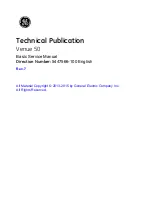
9
© 2019 Endotronix® Inc.
100469-00 Rev. 2
doctor a better idea of what the vessels in your pulmonary
arteries look like and will help guide placement of the sensor
to the best possible position. This is called angiography.
6.
At this point the pulmonary catheter is removed, the
catheter with attached Cordella Sensor replaces it, and the
best possible position for the Sensor is confirmed.
7.
Once the Sensor is in the best possible position, your doctor
will implant it.
8.
After the Cordella Sensor is implanted, the handheld Reader
will be held over the right side of your chest and the Reader
will begin reading the PA pressure. A pulmonary catheter will
be used to take some simultaneous reference pressure
measurements to calibrate the new Sensor.
9.
Following the removal of all catheters, the access site will be
closed, leaving the Cordella Sensor in the PA.
After the Implant Procedure
Once the procedure is complete, you will be brought to a recovery
area. While in the recovery area, a staff person will come by to take
some PA pressure measurements with the Reader. You may be kept
overnight for observation.
You will be trained on proper use of the Reader and the optimal
(prescribed) location for the Reader for readings taken at home. You
will also be given an implant card (about the size of a business card) and
discharged to go home. The implant card must always be kept with you
to alert medical and security personnel to important information about
your Sensor.










































